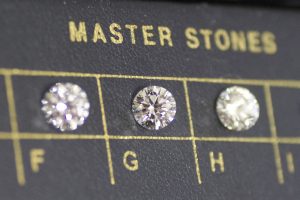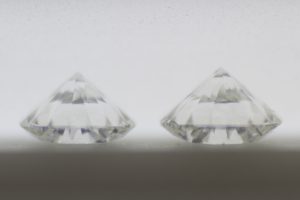
I am one of the diamond buyers over at diamonds2cash.com, a customer who is considering selling a diamond has an appraisal that states:
Cut: Round Brilliant
Estimated weight by formula: 1.10 carats
Clarity: VS-2
Color: “L” as set
Symmetry: Good
Polish: Good
The seller was curious about what “L” as set means.

When grading the color of a diamond, ideally they are placed table down next to a master stone and the color is compared to the diamond of known color. A grader will have a set of master stones in a number of colors and check the stone being graded to the masters until they find the closest match.
That is the ideal situation… often appraisals must be done when the diamond is set in a ring or another piece of jewelry. The color and setting style can have a major impact on the appearance of color.
When set in jewelry the diamond may appear to have less color than it actually does, placing a yellow “M” color diamond into a platinum setting may give it the appearance of it being K or L in color (or even higher!).
Only if the diamond was removed from the setting could the actual color be determined. It is a bit of guess work when grading color of a set diamond so an appraisal will indicate that the diamond was graded set as a warning that the information may not be 100% accurate.
Major diamond grading labs such as the GIA will not grade diamonds unless they are loose, simply because they can not be 100% certain about the diamonds 4C’s when mounted.

